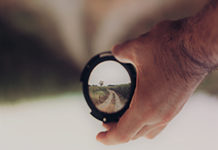
Karin White highlights how correctly fitted loupes can improve posture
Research clearly shows that over three-quarters of clinicians experience back or neck pain at some point in their lifetime. Many of the clinicians I see live with pain on a daily basis, struggling with the vicious circle of trying to get comfortable whilst caring for the patient and operating dental equipment all at the same time. This can often result in physical and mental stress and in extreme cases can lead to a permanent injury or a career-ending disability.
Clinicians usually report that the aches and pains worsen towards the end of the day and that over time these symptoms are aggravated by maintaining prolonged poor working positions, with many finding themselves dreading long procedures.
If problems are identified early, they can usually be resolved with simple measures, for example, by using loupes for magnification and adopting the correct posture.
Preventing neck and shoulder pain
Clinicians are increasingly turning to custom-made loupes and a light as a straightforward way to address neck and shoulder pain and prevent long-term damage.
The use of magnification and illumination offers many advantages for dentists and hygienists/therapists of all ages. Not only do properly made loupes help deliver a greater field of vision, they also enable the operator to sit comfortably, at the correct distance from the patient, without straining their back or neck.
To achieve this ‘ideal’ of practising dentistry in comfort, it is vital to select loupes that are correctly measured by a trained and experienced consultant, as this will result in a far superior outcome.
Getting the right solution
At a loupe consultation, one of the key measurements for custom-made loupes is the working distance between the clinician’s eyes and the patient, which should be tailored to the individual. A good consultant will visit the practice and ask the nurse to play the role of the patient while taking measurements.
In addition to working distance measurements, multiple interpupillary distances are measured for correct vision and alignment as well as some observations of head geometry to ensure that the frame is comfortable and in the correct position.
The angle of declination is important as it should be steep enough to obtain a comfortable working position without the head being too far forward, as this leads to greater strain on the neck and in turn neck and shoulder pain and eye strain.
I usually spend between 30 minutes to an hour at a loupes and light consultation. This includes taking all the measurements, discussing choices in magnification and gaining vital information. For example, does the clinician wear glasses with prescription lenses? If this is the case it’s essential that the loupes are fitted with the same prescription, otherwise they will not deliver the optimum result and this could lead to a clinician descending into a never-ending cycle of pain and discomfort.
Clinicians who have turned to loupes often report the benefits as feeling more relaxed at the end of the day, having an improved posture, and less back and neck pain. What is crucial here, too, is the benefits to patients of improved clinical diagnosis and treatment because the loupes enlarge the working field, making tiny details clearer.
To find out how you can improve your wellbeing with loupes, click here and we’ll be in touch with our recommended solutions.
Visit www.examvision.co.uk or contact Evident on Freephone 0808 1000 888.
Facebook: Evident
Twitter: @EvidentDental
#livelifedental





